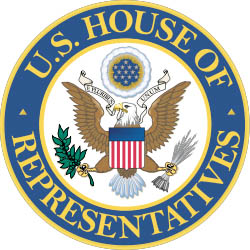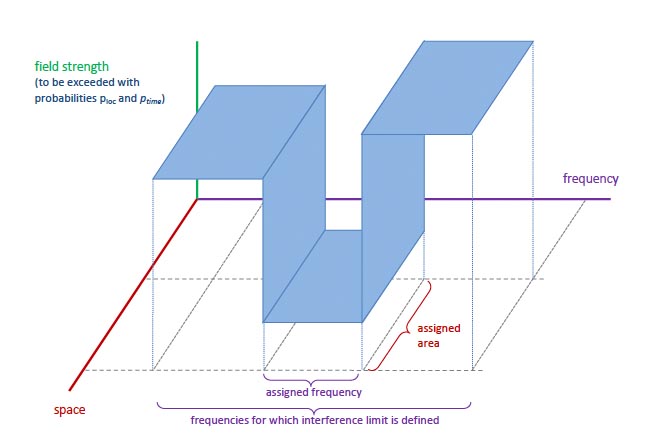
Members of a key technical advisory group told members of Congress this week that a more creative use of interference limits was preferable to setting receiver standards as the way to expand the use of scarce spectrum.
Although the committee focus was on communication devices in general, the issue of GPS receivers and the recent controversy involving LightSquared’s proposed ground-based wireless broadband service.
Members of a key technical advisory group told members of Congress this week that a more creative use of interference limits was preferable to setting receiver standards as the way to expand the use of scarce spectrum.
Although the committee focus was on communication devices in general, the issue of GPS receivers and the recent controversy involving LightSquared’s proposed ground-based wireless broadband service.
“The early calls for government mandates on device design have faded as stakeholders have come together to understand that such approaches are not the best solution we have to spectrum crowding,” said Brian Markwalter, senior vice president for research and standards at the Consumer Electronics Association in testimony Thursday (November 29, 2012) before the House Subcommittee on Communications and Technology.
Markwalter and fellow panelist Pierre de Vries, a senior adjunct fellow at the Silicon Flatirons Center at the University of Colorado in Boulder, are members of the Federal Communications Commission Technology Advisory Committee (FCC TAC). The FCC TAC’s Receivers and Spectrum Working Group has been working on the issue of receiver standards and is set to release a report December 10 at its next meeting in Washington.
Among the ideas that the FCC TAC is weighing is a proposal to establish “harm claim thresholds.” These are “explicit limits on the interference that systems have to tolerate without being able to claim harmful interference,” explained Pierre de Vries, a physicist who has been studying the issue of receiver standards for four years.
De Vries noted in his prepared statement that the FCC had dealt with interference in the past by putting the burden on the interfering neighbor — either requiring them to transmit at lower power, live with guard bands, or pay for receiver filters. This new approach, he said, would enable both incumbent users and newcomers to know what was expected and work out their own solutions.
“What is very appealing about the approach,” underscored Markwalter, “is that it allows the problem to be stated but doesn’t go directly to the solution. It sets up the environment, provides a framework, but leaves it in the hands of users to build equipment to meet these needs.”
Implementation could be eased in over time, de Vries told Rep. Lee Terry, R-Nebraska.
“When you start you are going to have a lot of devices out there. . . . So, the threshold would be set very low . . . so [that] all the existing receivers are protected,” de Vries said, noting that the threshold might be so low that a new service using nearby spectrum would not be able to launch. Then, maybe a decade later, the FCC would increase the level of interference that incumbents would have to put up with, he said.
Terry asked if the FCC would not then be faced with the same problem it is now — anticipating and navigating the interference environment.
No, said de Vries. The level of interference would be set — how the incumbents addressed it would be up to them.
Terry wanted to know how long it would take to establish a harm claim threshold.
The third person providing testimony to the House panel suggested that the upcoming FCC TAC report would address this issue.
“As we know the TAC is working to flesh out this approach and will provide a formal recommendation,” said Ron Repasi, the deputy chief in the FCC’s Office of Engineering and Technology.
In fact, all three panel members deferred to the upcoming FCC TAC report and to the results of another study by the Government Accountability Office expected out in February. The latter report, also on interference and receiver standards, was mandated under the Middle Class Tax Relief and Job Creation Act of 2012 signed into law early this year.
Multiple Studies
At least two additional groups are studying receiver issues as well. The National Telecommunications and Information Administration has its Commerce Spectrum Management Advisory Committee looking broadly at the matter. NTIA has also just established, at the request of the National Coordination Office (NCO) for Space-Based Positioning, Navigation and Timing (PNT) a task force to look at receiver issues specific to the GPS community.
The deputy secretaries of the U.S. defense and transportation departments, who jointly provide leadership for the nation’s Space-Based PNT Executive Committee, had proposed “to draft new GPS Spectrum interference standards that will help inform future proposals for non-space, commercial uses in the bands adjacent to the GPS Signals and ensure that any such proposals are implemented without affecting existing and evolving uses of space-based PNT services vital to economic, public safety, scientific, and national security needs.”
The new task force, coordinated by the NTIA’s head engineer Edgar Drocella, is leading that spectrum-sharing investigation. It has met twice and is still framing the technical assumptions and study architecture.
“A lot of technical work is still ahead,” said Tony Russo, NCO PNT director, which will require the interagency ExCom and NCO to remain engaged with the issue. “[The task force members] are going to reach out to industry once we have a product that is mature enough.”
LightSquared versus GPS
Although the GPS–LightSquared conflict was frequently mentioned during the hearing, and both LightSquared and the GPS community had observers in the audience, neither side testified. Several on the committee asked, however, whether the FCC should work to develop an inventory of receivers, a reflection of a problem that arose during the LightSquared fight.
GPS has become so integrated into so many applications that it was difficult to judge the effects of interference directly. The harm claim threshold would not appear to require an inventory of receivers.
There was also no way to contact each GPS user to track and resolve problems, the committee pointed out in its pre-hearing background brief. Unlike with Apple, which screens every proposed app offered through its on-line store or a mobile phone company that sets strict rules for its receiver manufacturers, the GPS signal is provided for free by the government with an assurance of minimum service levels but limited interaction with users.
“When there is no licensee as in the case of GPS in the LightSquared case, what do you think the remedy is?” Chairman Greg Walden, R-Oregon, asked De Vries.
“The simplest solution is to set the harm claim threshold,” said de Vries, “and we will assume it is a well-run industry with a lot of competitors and they will come up with standards.”
Though De Vries did not want to comment specifically on the GPS-LightSquared case when asked by Inside GNSS, he noted that
“you are going to get a decade of confusion” in a situation “where there is uncertainty about the rights of one party to transmit and responsibility of the other party to tolerate interference.”
You are also “going to get people at the end saying, perhaps rightly, ‘I didn’t know that this was coming.’ And others will say: ‘No. You should have known this was coming,’ ” he said, adding that “the goal of this approach is to make clear upfront what the responsibilities are.”
Even so he acknowledged, the situation with LightSquared and GPS is especially difficult.
“The people I’ve spoken to definitely recognize that one of the hardest problems we’re facing right now is the co-existence of satellite systems and terrestrial systems.”
At least one lawmaker appeared to have made up her mind that her subcommittee needed to focus more on finding a solution for the future than trying to come up with a workaround for the still-pending LightSquared proposal.
What happened to LightSquared is disappointing, said the subcommittee’s ranking Democrat Rep. Anna Eshoo of California. “But unfortunately that ship has sailed.”





